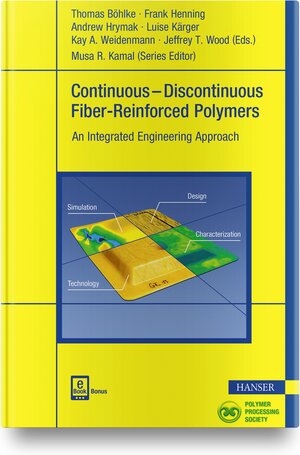Continuous–Discontinuous Fiber-Reinforced Polymers
An Integrated Engineering Approach
herausgegeben von Thomas Böhlke und weiterenDiscontinuous long fiber-reinforced polymer structures with local continuous fiber reinforcements represent an important class of lightweight materials with broad design possibilities and diverse technical applications, e. g., in vehicle construction. However, in contrast to continuous fiber-reinforced composites, extensively used in the aircraft industry, there is still a lack of integrated and experimentally proven concepts for manufacture, modeling, and dimensioning of combinations of discontinuously and continuously reinforced polymer structures. This is partly ascribed to the complexity of the manufacturing processes of discontinuously reinforced polymers, with heterogeneous, anisotropic, and nonlinear material and structural properties, but also to the resulting bonding problem of both material types.
This book addresses these issues, including both continuous and discontinuous fiber processing strategies. Specific design strategies for advanced composite reinforcement are provided, with an integrated and holistic approach taken for composites material selection, product design, and mechanical properties. Characterization, simulation, technology, design, future research, and implementation directions are also included.
Especially in the field of application of three-dimensional load-bearing structures, this book provides an excellent foundation for the enhancement of scientific methods and the education of engineers who need an interdisciplinary understanding of process and material techniques, as well as simulation and product development methods.
This book addresses these issues, including both continuous and discontinuous fiber processing strategies. Specific design strategies for advanced composite reinforcement are provided, with an integrated and holistic approach taken for composites material selection, product design, and mechanical properties. Characterization, simulation, technology, design, future research, and implementation directions are also included.
Especially in the field of application of three-dimensional load-bearing structures, this book provides an excellent foundation for the enhancement of scientific methods and the education of engineers who need an interdisciplinary understanding of process and material techniques, as well as simulation and product development methods.







